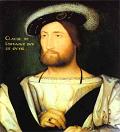The very preliminary Toyota Hilux started production in march of 1968. This model was identified as the RN10 and came in a short wheelbase model with a one.5L engine, this w2as later replaced with a one.6L engine in 1971. We often get queries like
Toyota Hilux Parts Early 1969 saw the addition of a prolonged wheelbase version to the lineup.The 2nd generation of the Hilux was released in 1972 as the RN20 model. This model was much a lot more comfy than previous versions and incorporated numerous exterior visual updates. In 1975 the Hilux went by means of a major revamp in styling. It was developed to be both larger and substantially much a lot more luxurious than previous designs.In 1978 Toyota introduced the third generation of the Hilux, with a four wheel drive option introduced in early 1979. The four wheel drive versions incorporated a sound front axle and leaf suspension setup.Mid 1983 saw the introduction of the fourth generation of the Hilux. Incorporated in the lineup for the preliminary time was a Xtracab option which was a two row extended cab version for much a lot more seating region in the cab. All by means of the life of the model it saw continued improvements of both the engines and suspensions. In 1986 the sound front axle was altered more than to a independent front suspension setup.In 1988 Toyota introduced the fifth generation of the Hilux. The Xtracab selections now came with what have been known as jump seats that folded up when not in use to allow for much a lot more region behind the front seats.The sixth generation of the Hilux started in 1995. This generation adjust saw numerous badge alterations across the marketplace as properly as many engine and suspension selections.In 2005 the Hilux saw the introduction of the seventh generation. This version elevated in dimension and was now classified as a mid sized select up. A facelift version was released in 2008 which further sleeker lines and a smoother seem to the automobile.All through its lifespan the Hilux has built up a reputation for staying sturdy, reliable and even been coined as staying practically indestructible.Post In 1941 the Imperial Japanese Army occupied the Philippines, exactly where they obtained a Bantam Mk II, and promptly brought it to Japan. The Japanese military authorities commanded Toyota to make a equivalent automobile but to not model the appearance on the American Jeep. The prototype was known as the Model AK and was formally adopted by The Japanese Imperial Army as the Yon-Shiki Kogata Kamotsu-Sha ( The Imperial era 2604th model compact cargo-truck ).Later in 1941 the Japanese government asked Toyota to create a light truck for the Japan military campaign. Toyota created a one/two ton prototype known as the AK10 in 1942. The AK10 was built making use of reverse-engineering from the Bantam GP. There are no known surviving photographs of the AK10. The only known pictorial representations are some rough sketches. The truck featured an upright front grille, flat front wheel arches that angled down and back like the FJ40, headlights mounted over the wheel arches on either side of the radiator and a folding windshield.The AK10 used the 2259 cc, 4-cylinder Sort C engine from the Toyota Model AE sedan with a 3-speed manual transmission and two-speed transfer gearbox linked to it. There is no mechanical relationship in between the AK10 and the postwar Toyota “Jeep” BJ. Most of the AK10′s have been not actively used (as opposed to the U.S. Jeep) and there are nearly no photographs of it in the battlefield.
Toyota Hilux Seat Belt
# posted by Ted Heath @ 9:33 PM
